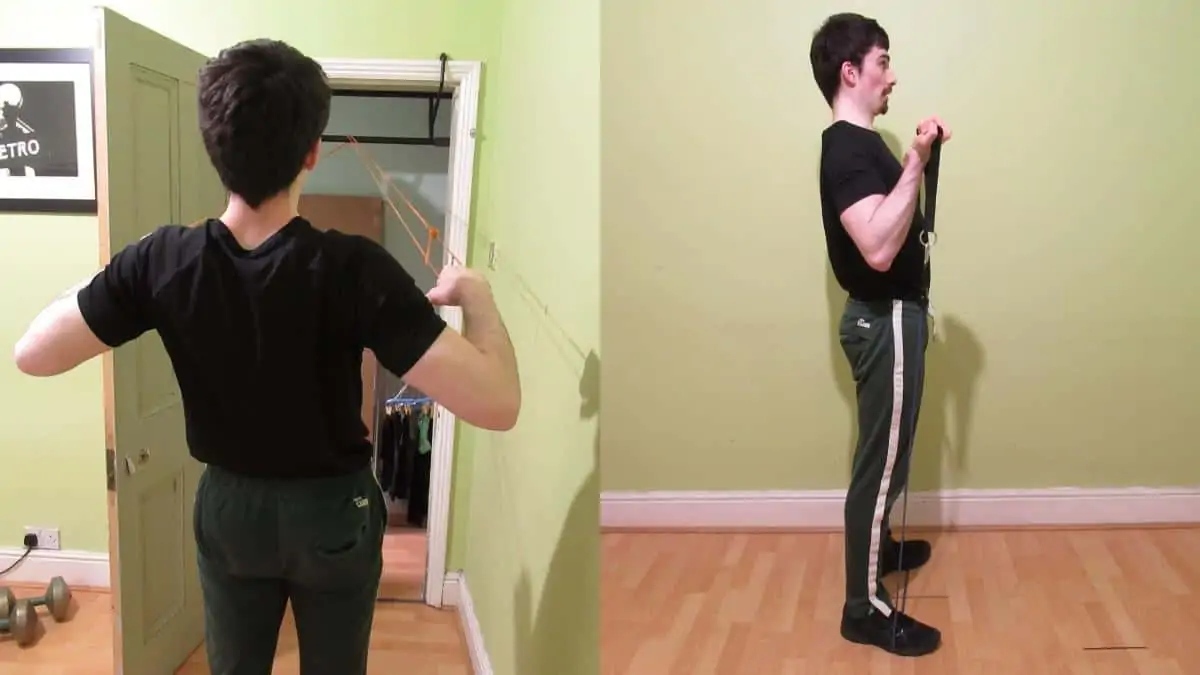In our lesson on biceps brachii anatomy, we noted how it’s essential to train both bicep heads for optimal muscle development. This means doing exercises during your back and bicep resistance band workout that have you curl with your arms behind your body as well as in front of it.
For this guide, we created three back and bicep workout routines that require nothing but resistance bands. Not only will these challenging training sessions sculpt your bis, they’ll also blast your back muscles (traps and lats) as well.
Related: Back bicep shoulder workout
Resistance band back and bicep workout routines
Each of these banded back and bicep workout routines caters to a different goal. So whether you want to build maximum mass or just get a pump before going out, we’ve got you covered.
Ideally, you’ll need a band set that comes with a door anchor so that you can attach your bands to the top of the door and do lat pulldowns—a critical exercise in any back or bicep building workouts.
We also have a back and bicep workout for women in case you’re after a female-specific routine.
Starter workout
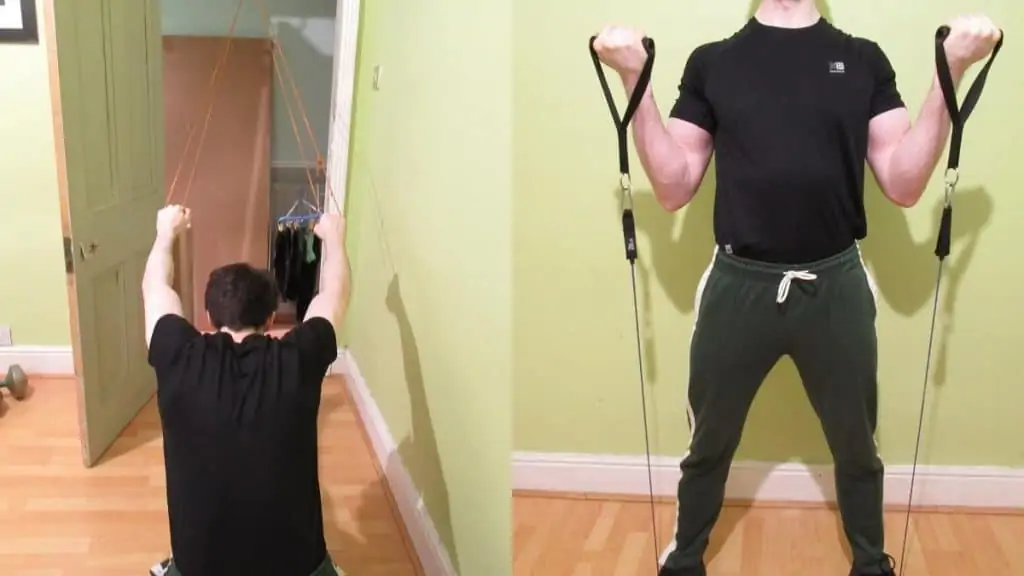
1: Band pulldowns — 3-4 sets of 12-25 reps
2: Band rows — 3-4 sets of 12-25 reps
3: Band curls — 3-4 sets of 12-20 reps
4: Reverse bicep curl using a band — 3-4 sets of 12-20 reps
If you’re new to resistance bands or weight lifting in general, this workout is for you. It uses simple but effective bicep band exercises to build a foundation of muscle mass that will stand you in good stead for years to come.
By focusing on the proven basics—pulldowns, rows, curls—you’ll gain rapid strength and avoid overtraining. It only takes a few sets per movement to get great gains as a novice lifter, so milk this initial growth before doing extra sets and additional exercises.
As you can see, you’ll be sticking with high reps for this workout. This protocol ensures that your muscles get enough time under tension to grow bigger. Yet, it also makes up for the relatively poor (compared to cables) resistance curve of bands, by which I mean that bands naturally feel much heavier at certain parts of the rep than at others.
Aim to rest 1-3 minutes between sets.
Hypertrophy workout
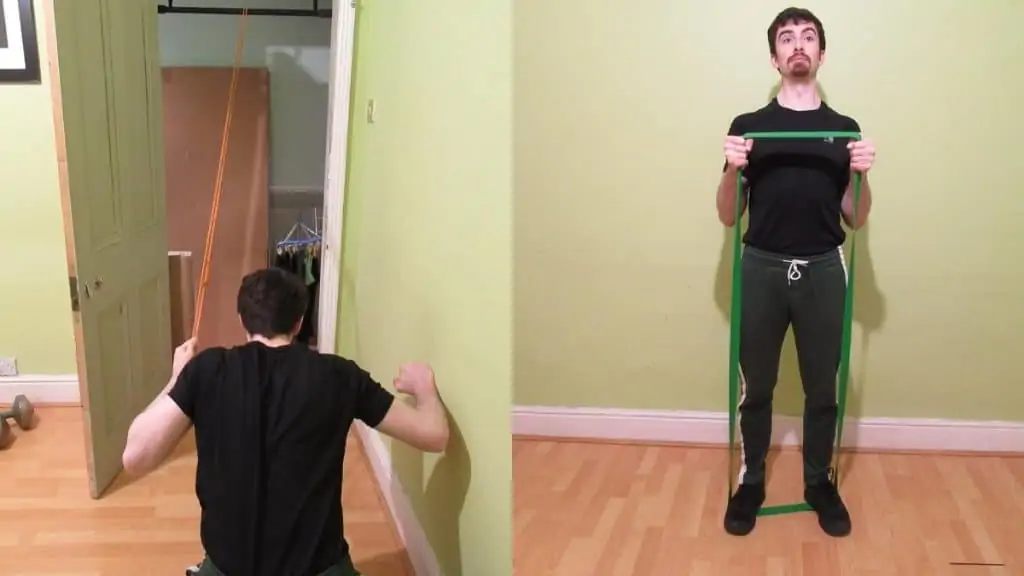
1: Single-arm band pulldowns — 3-5 sets of 10-20 reps
2: Band high rows — 3-5 sets of 12-25 reps
3: Band shrugs — 3-5 sets of 15-30 reps
4: Band hammer curls — 3-4 sets of 10-15 reps
5: Band bicep curls — 3-4 sets of 12-25 reps
6: Band drag curls — 2 sets of 30-50 reps
This hypertrophy-focused resistance band back and bicep workout uses a diverse set of exercises and varied rep ranges to attack your back and blast your biceps from every conceivable angle. So if you’re looking to gain maximum mass without free weights, this is the workout for you.
Unlike the starter session, you’ll be doing single arm pulldowns with bands so that you can give each lat muscle more attention and avoid developing muscular imbalances.
Next up are banded high rows and a shift from the lats to the traps. This exercise really builds the upper and mid trapezius in addition to the rear delts, which helps to make your physique look thicker when viewed from the front and back.
For shrugs, you’ll want to use heavy bands or double loop a lighter band to get adequate resistance because the small range of motion naturally lends itself to heavy weights.
In the second half of the session, it’s time to grow those guns. Banded hammer curls build the brachialis, brachioradialis, and, of course, the biceps themselves. Then you’ll wind down the workout with regular bicep band curls to focus on the meat of the biceps brachii before ending the arm assault with drag curls to focus on the long head of the biceps. By this point, your back and biceps will feel inflated.
Rest 1-2 minutes between sets.
Pump workout
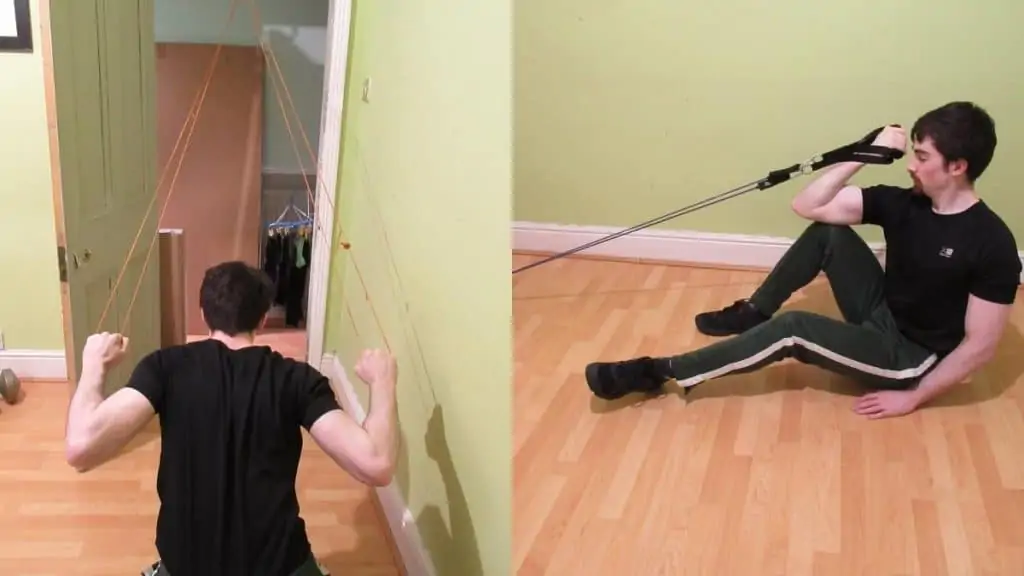
1: Band pulldown — 3-4 sets of 25-30 reps
2: Band rows — 3-4 sets of 25-30 reps
3: Band shrugs — 3-4 sets of 25-30 reps
4: Band preacher curl — 3-4 sets of 30-50 reps
5: Band drag curl — 3-4 sets of 30-50 reps
The final back and bicep resistance band workout will shuttle the maximum amount of blood into your muscles to deliver a skin-splitting pump. You’ll also be keeping the rest periods between sets relatively short (30-45 seconds) so that you can stay close to muscular failure and really stimulate that all-important hypertrophy.
Pulldowns and rows will take care of 90% of your back development. But just in case you want towering upper traps, you can also do high rep shrugs to grow your trapezius some more.
The resistance band preacher curl focuses on the short head of the biceps, whereas band drag curls emphasize the long head. In other words, the routine is perfectly programmed for optimal bicep growth. All you need to do is put in the effort and intensity to reap the rewards.
Read More: Back biceps and abs workout
Conclusion
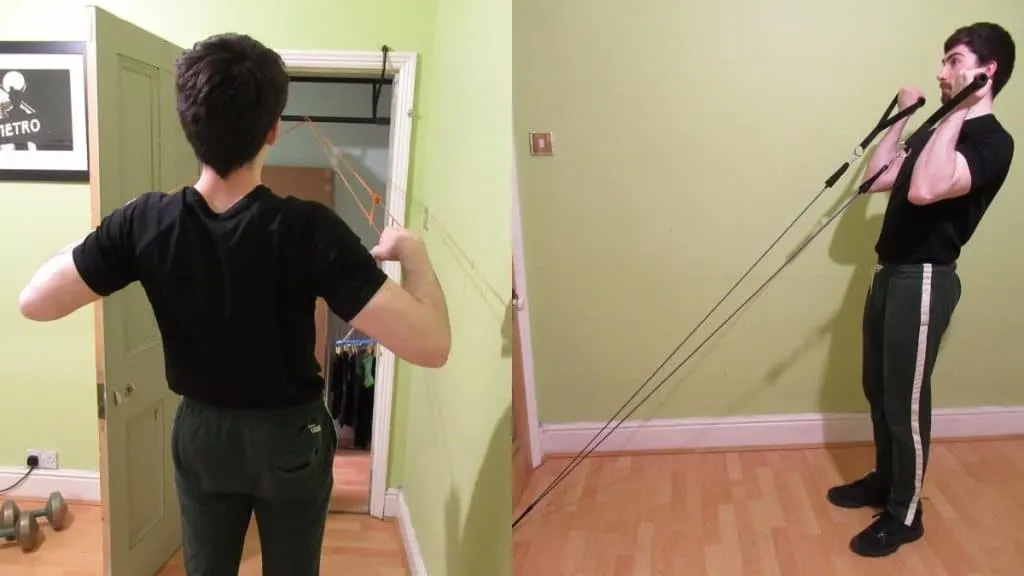
When you’re doing back and bicep workouts with bands, it’s important to stick to high repetitions most of the time so that your muscles receive sufficient time under tension. This is because bands don’t provide the same resistance level at all parts of the range of motion. For example, a pulldown is significantly more challenging when your lats are contracted than when they’re stretched.
Also, make sure to choose an appropriate resistance band back and bicep workout for your goals and ability level. As hardcore as it may seem to do one of the advanced workouts, beginners can often make better gains by sticking to simple routines and exercises. This way, you can focus on proven training techniques like progressive overload that really build that foundation of muscle mass.
Of course, if you’ve been lifting for a while, then you can go ahead and try one of the other back and bicep resistance band workout routines. The sessions will be very tough, so don’t think that you’re in for an easy ride just because you’re lifting rubber rather than heavy iron!

